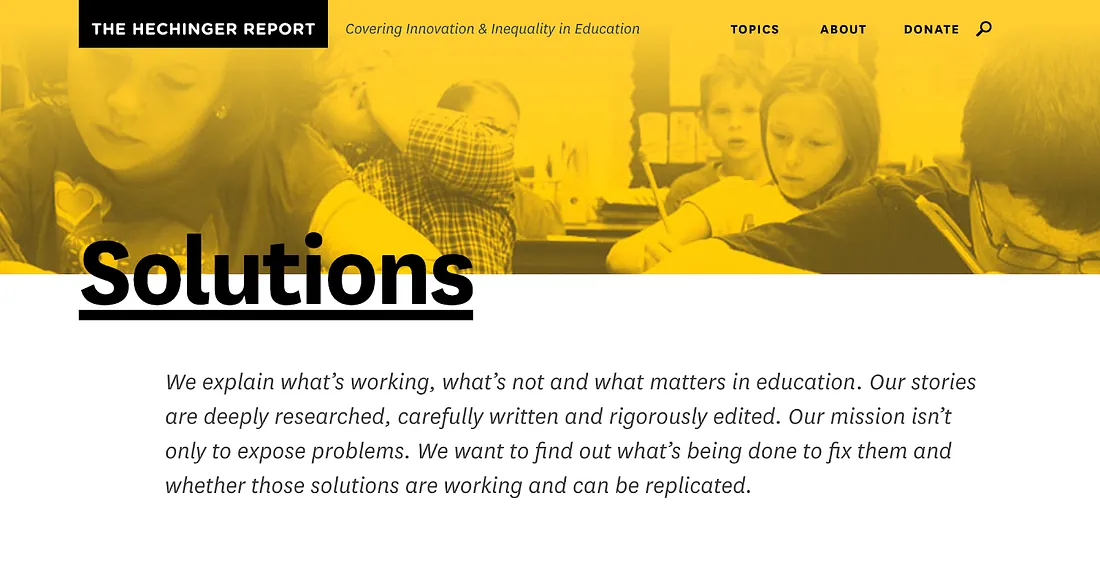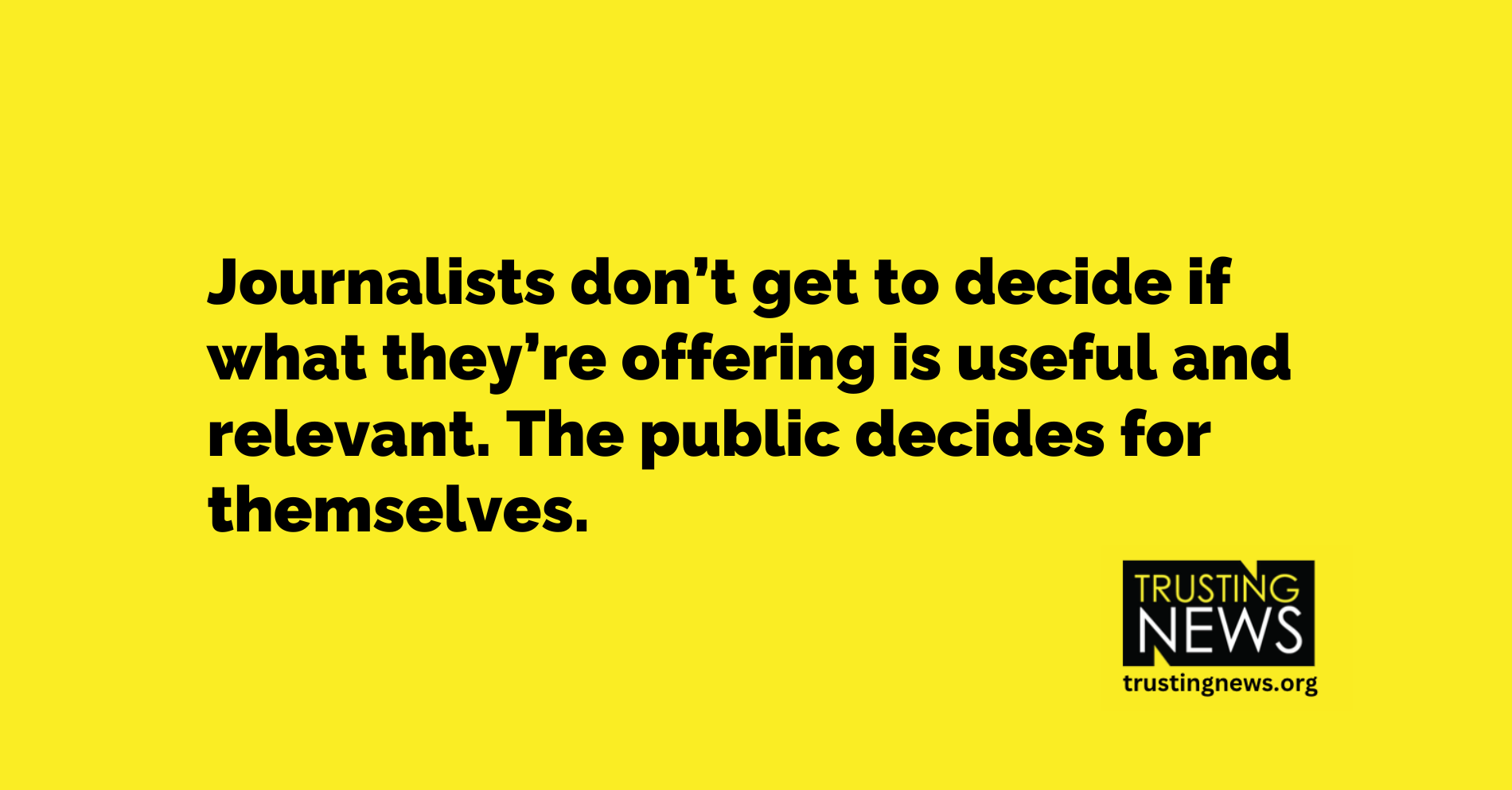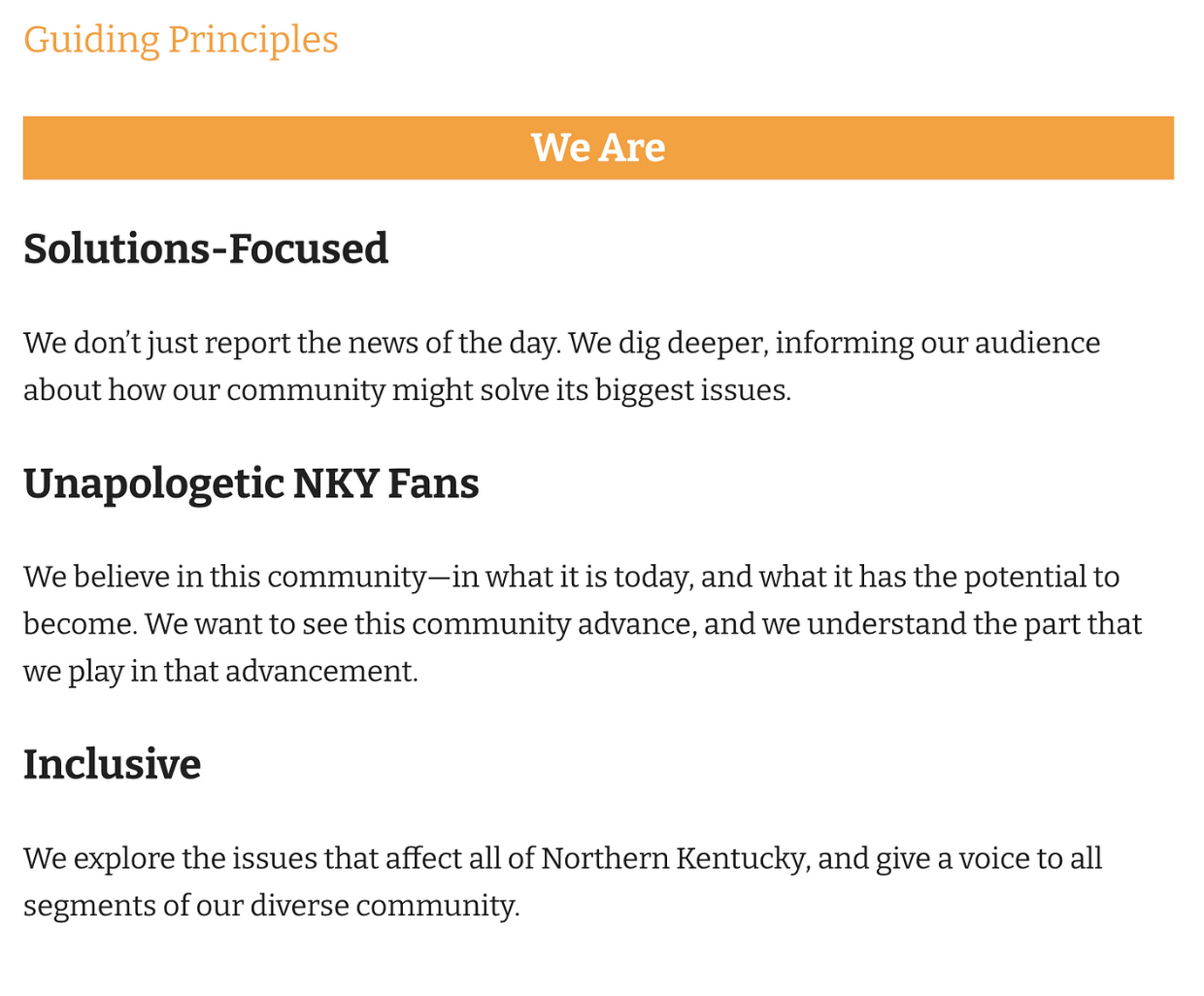
If your news organization is providing your audience with the solutions journalism they want, you should make sure they know that. Trusting News can help.
If you’re doing solutions journalism, don’t forget to tell your audience
If your news organization is providing something you know your audience wants, you should make sure they know that. Seems simple enough, right? If you want credit for providing a value or service, your audience first needs to be aware of it.
But some newsrooms really struggle to articulate a compelling message about what they offer. At Trusting News, we help journalists tell the story of their values, mission, ethics and processes in ways that highlight their credibility and build trust. We help them articulate their values and priorities.
If you’re working with the Solutions Journalism Network or otherwise reporting on solutions, at least one part of your story is clear: You want to help your community understand its challenges more deeply, and that involves highlighting efforts that are making progress in addressing those challenges.
Doing that work is valuable and important, which is why it’s so important to add a step: telling your audience what you’re doing and why it’s consistent with your goals as an organization. The goal isn’t to get your audience excited about solutions journalism. In fact, you don’t even need to use those words. But the values behind your solutions work are worth shining a light on. Otherwise, you can’t get credit for them.
Too often, journalists put their work out into the world and assume users will notice what’s important about it. We want to get credit for our thoughtful approach, our responsible sourcing and our ethical decision-making. But often, people *don’t* notice those things. (Of course they don’t — they’re quickly scrolling through headlines looking for things that help them live their life or understand their world.)
So while we think our motivation and goals are clear, so often they’re not. We know that the public does not give us the benefit of the doubt. Instead, they often assume the worst about why journalists do what they do and what our goals are. Solutions stories are one opportunity to show they’re wrong. Journalists care about exposing problems, yes, but also about who is making newsworthy progress to solve them — and how.
We’ve worked with two solutions-focused newsrooms, The Hechinger Report and Alaska Public Media, on ways to communicate this message. In one notable part of that work, The Hechinger Report experimented with inserting clear solutions language into a newsletter. They used an A/B test, with half the newsletter list getting a traditional approach and half getting the language shown here. The click-through rate was 15% higher on the version with the solutions language. Read more about our work with those two newsrooms here.
If you want solutions work to be part of the story of your journalism, you need to actually tell that story. And after four years of working with newsrooms on these strategies, we can show you how. Our goal isn’t to prescribe precise language but instead to recommend best practices that have emerged. We’ll start with three recommendations. (Find them in a printable handout here.)
1. Mention the solutions frame on social media and in newsletters
Anywhere you invite people to click through to a story, make the solutions focus part of that invitation. In newsletters and on social media especially, an informal style often means journalists can experiment with language that feels natural to them. Things like:
- We know it can be refreshing to read about positive things happening in the community. That’s one reason we’re bringing you …
- The world is full of problems, but it’s also full of people working hard to solve them. That’s why …
- The journalists who work at xxx are your neighbors. They want what’s best for this community. That’s why we’re always eager to bring you stories about the people working hard to make this community better/safer/healthier.
2. Point out the solutions focus on the story pages
No matter how news consumers find a solutions story, once they land on it, they should learn that the story is focused on organizations and people working to solve problems. That should be clearly stated, not just implied. Each story could have an italicized paragraph at the top. Examples:
- From The Hechinger Report: We don’t just expose problems. We also find out what’s being done to fix them, whether those solutions are working and if they can be replicated.
- From Alaska Public Media: The Solutions Desk looks beyond Alaska’s problems and reports on its solutions — the people and programs working to make Alaska communities stronger. Listen to more solutions journalism stories and conversations, and share your own ideas here (link).
- Suggestion from Trusting News: We are committed to rigorous reporting not only on social problems but also on potential solutions to them. Read more about our solutions journalism efforts and share your ideas here (link).
3. Have a landing page for solutions work
Solutions newsrooms should have a place on their websites where they declare the intent and frame of solutions work and collect related stories.
The page can include:
- A statement of purpose for solutions work (with a potential link back to the Solutions Journalism mission)
- A collection of links to solutions stories
- A callout for story suggestions or questions (what problems do you want to see us explore?)
- Contact information for the journalists most involved
You’re lucky to know what you stand for
As a newsroom that does solutions journalism, you’re doing work that represents something your community values. That’s great! Don’t let that go unnoticed. Make it part of your routine to remind the audience of that regularly, wherever they encounter solutions stories.
At Trusting News, we learn how people decide what news to trust and turn that knowledge into actionable strategies for journalists. We train and empower journalists to take responsibility for demonstrating credibility and actively earning trust through transparency and engagement. Subscribe to our Trust Tips newsletter. Follow us on Twitter and LinkedIn. Read more about our work at TrustingNews.org.

Executive Director Joy Mayer (she/her) founded Trusting News in 2016 after a 20-year career in newsrooms and teaching. She lives in Sarasota, Florida, and can be reached at joy@TrustingNews.org.


